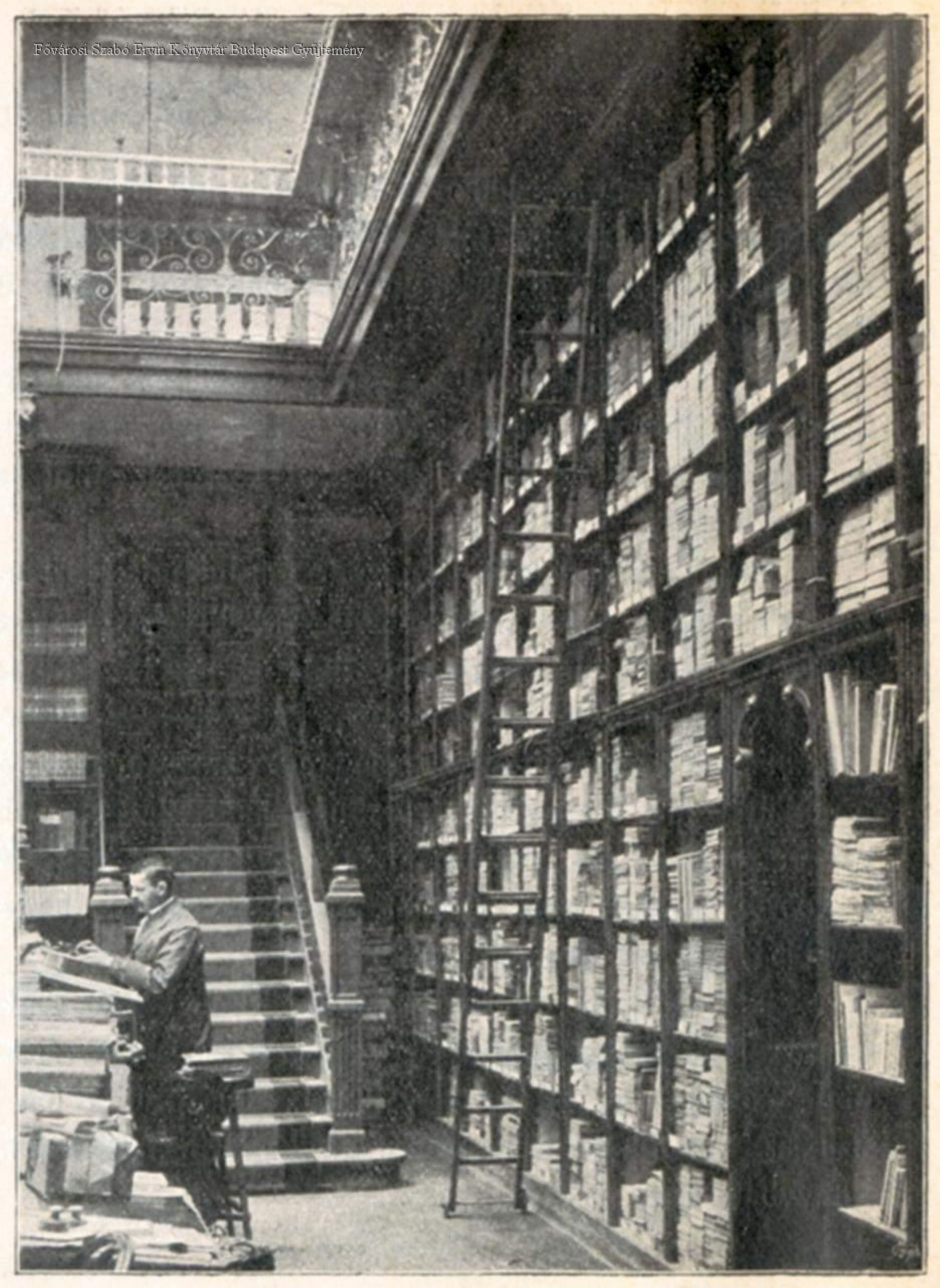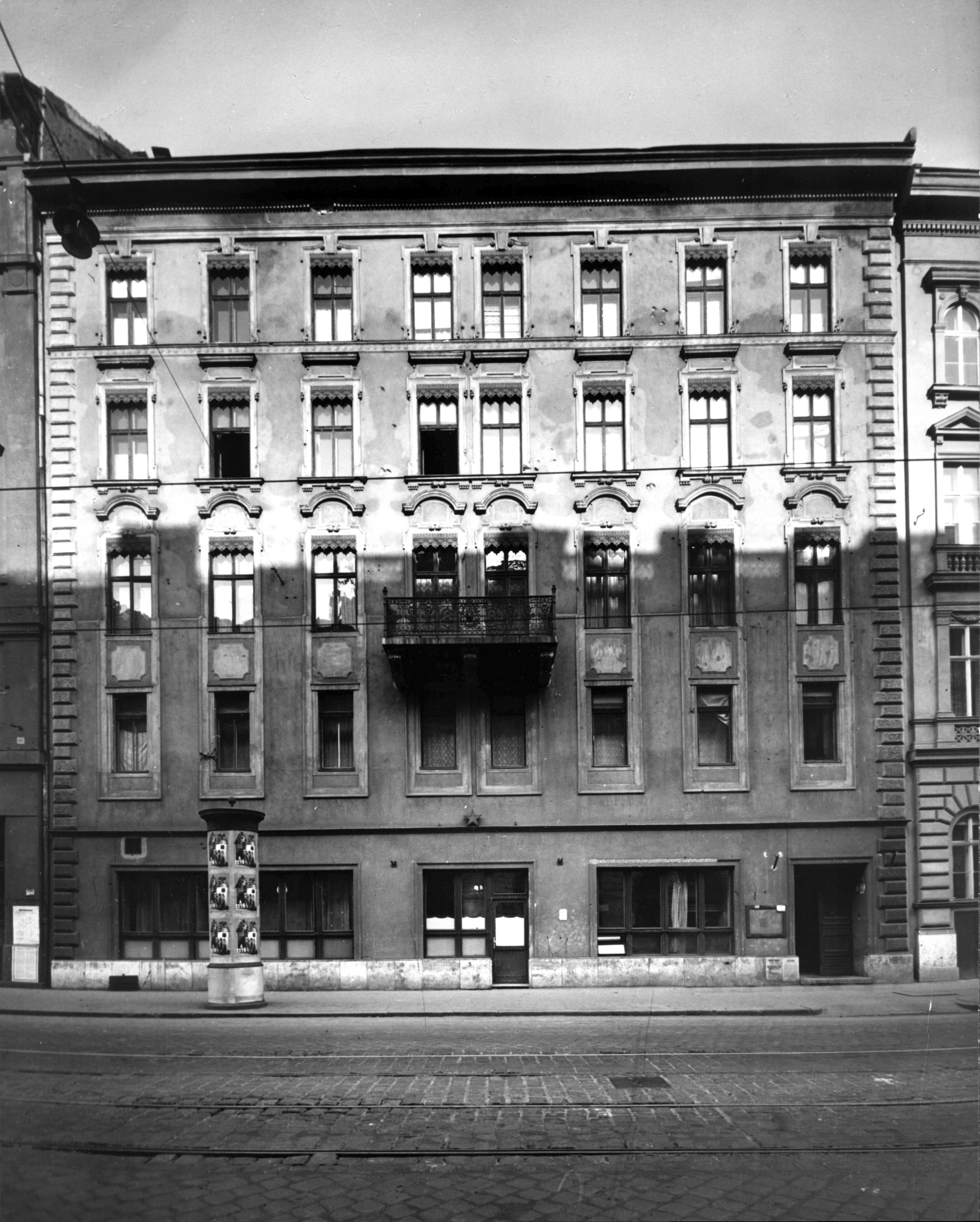The history of the book publishing company began in 1856, when Sámuel Révai (1833–1908), who studied bookbinding, opened a workshop and a bookshop in Eperjes (today's Prešov, Slovakia). The business went well, and ten years later he set foot in Pest, where he operated a bookstore and an antique shop at 19 Károlyi Street, led by his younger brother Leó (1844–1909).

Portrait of Samuel Révai from the 23 December 1900 issue of Ország-Világ
Already in 1880, the sons of Sámuel joined the management of the business: this year Mór and Ödön Révai founded a publishing house with the help of their father and uncle. The building that housed the publishing house named Révai Brothers was located at today's 18 Váci Street, and their printing house was located in Ügynök (today's Kresz Géza) Street. The business's success was growing, especially the efficiency of book distribution could be envied by competitors. In 1885, the company won the right to distribute the popular book series The Austro-Hungarian Monarchy in Word and Picture, edited under the patronage of Archduke Rudolf, Crown Prince of Austria, and launched a national colportage campaign (colportage means distribution in French).
By the early 1890s, six travel agents were visiting the country to promote the publisher's products, and more than 6,000 booksellers had purchased Révai books. The success of the publishing activity was further enhanced by the fact that they managed to reach an agreement with Kálmán Mikszáth and Mór Jókai. Since the last decade of the century, the publishing house had the exclusive right to publish the two writer's books, and with that, they appeared on the market with at least 10,000 copies a year.
They also had great success on the international stage, when they won a grand prize at the 1900 World's Fair in Paris with a series of 100 books about Mór Jókai's whole collection of works, which started in 1894. The huge demand prompted Ödön Révai to further develop the company, which was already operating as a joint-stock company, by opening a completely independent building. Architect Izidor Sterk was commissioned to design a four-storey building that on the lower three levels will house a bookstore, reading room, publishing offices, printing house, warehouse, packaging, and rental housing on the third and fourth floors to provide an additional permanent income for the company.

18 Üllői Road (Révai Brothers' Literary Institute Révai Brothers' Bookstore, 1898)
The customer entered a bookstore from the right and left of Üllői Road, and through the main entrance, they first entered a foyer, from where they arrived in a tastefully furnished reading room, where they could flip through the book they wanted to buy in calm conditions. The reading room was followed by a large hall covered with glass, at the northern and western ends of which stood huge shelves of books, full of works published by the Révai Brothers. A flight of stairs led up to the gallery on the north side of the hall, where all the company’s office staff worked.

The lobby of the house (Révai Brothers' Literary Institute Révai Brothers' Bookstore, 1898)

The large hall with a glass roof and the gallery housing the offices (Révai Brothers' Literary Institute Révai Brothers' Bookstore, 1898)

The reading room, behind it, is the large hall (Révai Brothers' Literary Institute Révai Brothers' Bookstore, 1898)

The office part on the gallery (Révai Brothers' Literary Institute Révai Brothers' Bookstore, 1898)

Entrance to the gallery, and the ten-storey bookshelf system (Révai Brothers' Literary Institute Révai Brothers' Bookstore, 1898)
The bookstore was waiting for customers on Üllői Road until 1936, the following year the Révai Family sold the house and moved its headquarters to 16 Vadász Street in the 5th District. From 1938, the Lichtman Shoe Factory operated on the site of the bookstore until its nationalisation, and from 1948 onwards, production and trade continued in the building under the name Quality Shoe Factory. The nationalisation not only changed the ownership of the business: new flats were built in the building, and the ground floor business portal was made rather uncharacteristic, the glass hall remained until the change of regime.

18 Üllői Road, 1959 (photo: Fortepan/No.: 103156)
In November 1991, Bőrker Rt. opened a store on the ground floor called Atrium. At this time, the entrance was framed with copper pipes, thus ensuring the illumination of the portal. Unfortunately, the condition of the building was constantly deteriorating, and in the 2000s the facade showed an increasingly sad picture. However, two years ago, the facade was renovated and, although not in its original splendours, it offers a very beautiful view. There is only a plaque missing at the entrance, which would inform visitors about the past of the building.

The inner courtyard

Entrance to the staircase

The entrance to the house nowadays
Cover photo: The house in 2022 (photo: Simon Tímea)




































Hozzászólások
Log in or register to comment!
Login Registration